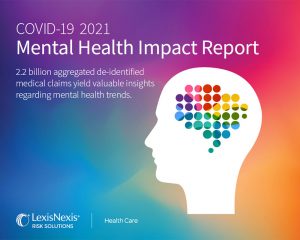What the Diagnosis Rate of Breast Cancer Can Tell Us about Population Health
October is well known as Breast Cancer Awareness Month. As it comes to a close and we put our pink ribbons away until next October, it’s important to keep the momentum of awareness and prevention going all year long.
Everyone knows someone who has been touched in some way by breast cancer. Your mother, friend, sister, daughter. When you look at the statistics for the disease just in the U.S., it’s not hard to see why:
- Breast cancer is the most common cancer in women, no matter your race or ethnicity.1
- About 1 in 8 U.S. women will develop invasive breast cancer in her life.2
- An estimated 266,120 new cases of invasive breast cancer are expected to be diagnosed in women in 2018.2
- About 40,920 women are expected to die in 2018 from breast cancer.2
But Where Are These Cases Taking Place?
We looked at claims data to track the number of patients with a breast cancer diagnosis across the U.S. Not surprisingly, the most populated states of Texas, New York and California represent the highest populations of breast cancer among U.S. states with Florida in a close third.
So Why Is This Important?
Understandably, health systems keep an eye on those statistics to help plan allocation of resources, care management and to respond to disease trends. Tracking medical conditions like cancer can give providers valuable insights into the rise and decline of affected patients, their comorbidities, referral patterns, therapy utlization, etc. over time.
This type of insight can serve as a valuable tool in population health management. According to a College of Healthcare Information Management survey, population health technology was second only to EMR system optimization as the recipient of technology investments by 38 percent of CIOs.
And where are these cases being treated? We also looked at the top ten facilities treating the highest volume of breast cancer patients in the U.S. Renowned Cleveland Clinic and Dana Farber Cancer Institute were among the top facilities. But there’s a lot more information they could be accessing. Data and analytics can be a powerful tool to understanding the disease and who it affects.
When the right data from multiple sources is connected, providers can gain clear views of:
- Breast cancer treatment trends
- Top facilities treating breast cancer patients
- Reimbursement amounts by payer, drug and geography
- Physician referral patterns
- Prominent physicians to target for recruiting
- Opportunities to build stronger clinically integrated networks
With these insights, organizations can make data-driven decisions that optimize their growth and, most importantly, ensure their ability to provide care for their patients. The end goal for everyone is a cure, but until then knowledge is power. Data is a critical tool in understanding where and how a disease is growing to guide research and ensure the best treatments and preventions.
* * *
Be sure to download our latest infographic, “U.S. Breast Cancer Diagnosis by State”.
1www.cdc.gov/cancer/breast/statistics/index.htm
2www.breastcancer.org/symptoms/understand_bc/statistics





